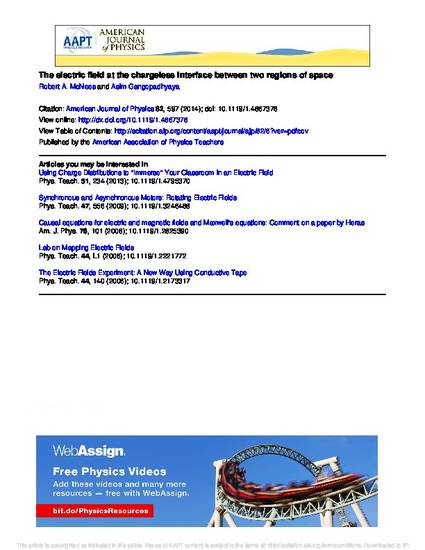
A common method for solving Poisson's equation in electrostatics is to patch together two or more solutions of Laplace's equation using boundary conditions on the potential and its gradient. Other methods may generate solutions without the need to check these conditions explicitly, and reconciling these solutions with the appropriate boundary conditions can be surprisingly subtle. As a result, a student may arrive at paradoxical conclusions—even in the case of elementary problems—that seem to be at odds with basic physical intuition. We illustrate this issue by showing how the potential of a uniformly charged ring appears to violate continuity of the normal component of the electric field at a chargeless surface.
Copyright © 2014 American Institute of Physics. This article may be downloaded for personal use only. Any other use requires prior permission of the author and the American Institute of Physics. The following article appeared in McNees, Robert A., and Asim Gangopadhyaya. “The Electric Field at the Chargeless Interface between Two Regions of Space.” American Journal of Physics 82, no. 6 (June 1, 2014): 597–601. doi:10.1119/1.4867378 and may be found at http://dx.doi.org/10.1119/1.4867378.

Copyright © 2014 American Institute of Physics. This article may be downloaded for personal use only. Any other use requires prior permission of the author and the American Institute of Physics. The following article appeared in McNees, Robert A., and Asim Gangopadhyaya. “The Electric Field at the Chargeless Interface between Two Regions of Space.” American Journal of Physics 82, no. 6 (June 1, 2014): 597–601. doi:10.1119/1.4867378 and may be found at http://dx.doi.org/10.1119/1.4867378.